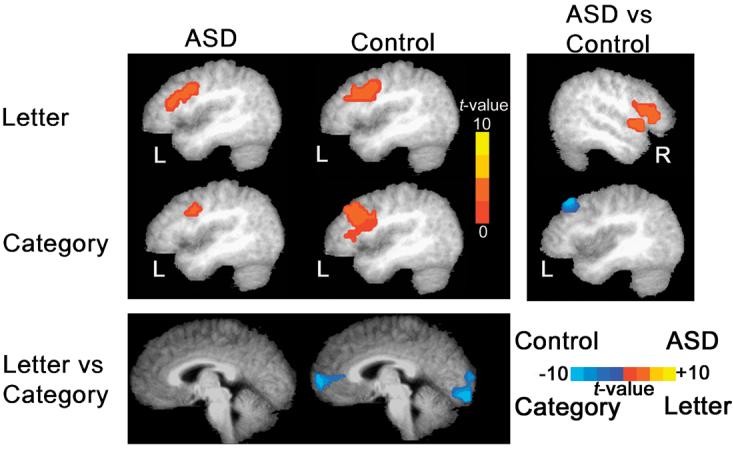Figure 1.

Areas of significant activation during letter and category fluency, superimposed on a standardized group-averaged brain. Results are organized by task (rows) and group (columns). Both groups exhibited significant (voxel height p < .005, voxel extent p < .05) left prefrontal activation during each verbal fluency task. In the letter fluency task, the ASD group evidenced significantly (voxel height p < .05, voxel extent p < .05) greater activation than the control group in right prefrontal cortex and right temporal cortex. There were no brain regions in which the controls had significantly greater activation than the ASD group. In the category fluency task, the controls had significantly (voxel height p < .05, voxel extent p < .05) greater activation in the left middle frontal gyrus. The ASD did not have greater activation than the control group in any brain region in the category fluency task. Within-group comparisons of letter fluency vs. category fluency revealed significantly (voxel height p < .05, voxel extent p < .05) increased medial frontal and occipital lobe activation during category fluency in the control group. No task related differences were observed in the ASD group. No brain area was significantly more active in the letter fluency task than the category fluency task in either group. Statistical significance for all comparisons was determined at the whole brain level using a Monte Carlo based procedure (AlphaSim) in AFNI. Clusters of activation that reflected differences in amount of reverse activation were not reported.
